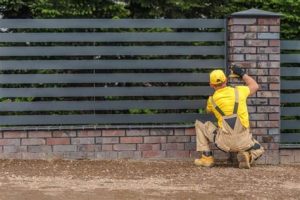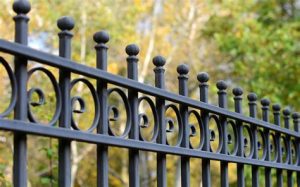Explore the benefits, challenges, and tips for winter fence installation, including the best types and tricks to prevent material freezing.As winter settles in, many homeowners may wonder if it’s feasible to install a fence during the colder months. Contrary to popular belief, winter can actually offer unique advantages for fencing projects, such as reduced ground moisture and fewer pests. However, it also comes with its own set of challenges that can complicate the installation process. From selecting the right type of fence to effectively preparing the ground, navigating the winter installation landscape requires careful planning and consideration. In this blog post, we will explore the benefits and challenges of installing a fence in winter, recommend the best types of fences to consider, and share essential tips and tricks to ensure a successful installation despite the chilly weather. Whether you’re ready to enhance your property’s curb appeal or ensure security, read on to discover how you can tackle your fencing project this winter.
Benefits of Installing a Fence in Winter
Installing a fence in winter can seem daunting due to cold temperatures and potential snow. However, there are several benefits to taking this step during the colder months.
One significant advantage is the calmer ground conditions. The ground is often frozen, which can make it easier to dig holes and set posts without the worry of muddy conditions that can occur in the spring or fall. Additionally, winter installations can be completed more quickly since the demand for fencing services often decreases during this season, providing greater availability from contractors.
Furthermore, installing a fence in winter can lead to savings on costs. Many fencing companies offer discounts during the off-peak season, allowing homeowners to get a higher quality fence for a lower price. With fewer projects competing for materials, there’s also a reduced risk of delays due to shortages.
Challenges of Installing a Fence in Winter
Installing a fence during the winter months may seem like a daunting task, but understanding the challenges involved can help you prepare effectively. One of the primary issues is dealing with frozen ground. When the earth freezes, it becomes much harder to dig and set posts, making it difficult to achieve proper depth and stability.
Another challenge is the weather conditions. Cold temperatures and potential snow can hinder the installation process. Wind chill factors can make it uncomfortable for workers, leading to decreased productivity and potential safety hazards. Additionally, any ice or snow accumulation can affect equipment, making tasks such as transporting materials more complicated.
Finally, using certain materials in cold weather can pose issues. For instance, concrete can struggle to cure properly in freezing temperatures, resulting in weaker post settings. Understanding how each material reacts in winter conditions is crucial for a successful installation.
Best Types of Fences for Winter Installation
When considering a fence installation during the winter months, it’s important to choose materials that can withstand the chilly conditions. Certain types of fences are better suited for winter installation due to their durability and resilience against ice and snow.
- Vinyl Fencing – This type of fencing is resistant to moisture and will not warp or rot, making it an ideal choice for cold climates.
- Chain Link Fencing – Durable and easy to install, chain link fences can handle winter weather conditions without damage.
- Composite Fencing – Made from a mix of wood and plastic, composite fences are resistant to the elements and will not splinter or swell in cold weather.
- Wood Fencing (if treated properly) – While wood can be affected by the cold, using weather-resistant treatments can enhance its durability for winter installation.
Choosing the right type of fence is crucial for successful installation in winter. Each option has its benefits, but it’s essential to consider local weather conditions and your specific fencing needs.
Overall, with the right materials, it’s entirely possible to enjoy the benefits of a freshly installed fence even in the heart of winter. Make informed choices and tailor your selection to withstand the seasonal challenges.
Tips for Preparing the Ground in Winter
When considering the installation of a fence in winter, the first step is to properly prepare the ground. Cold temperatures and frozen soil can pose significant challenges, but with the right approach, you can successfully ready the site for your fencing project. Here are some tips to ensure that your preparation is effective and efficient.
First, it’s essential to assess the soil conditions. Use a frost probe to check how deep the frost line goes in your area. Typically, frost depths can vary from a few inches to several feet depending on your geographic location. Keep in mind that you may need to dig deeper than usual to ensure a stable foundation for your posts.
Next, consider the water drainage around the area where the fence will be installed. Heavy snowfall and ice can create pools of water that may affect the integrity of your fence over time. Assess the slope of the ground and plan for proper drainage to prevent damage from thawing and freezing cycles. Installing a French drain or excavating trenches can help manage excess water.
Additionally, clearing the area of any debris and snow is crucial. This not only ensures a clean workspace but also allows for better visibility and accuracy when marking out your fence line. Remove any rocks, roots, and other obstructions that could complicate your installation process.
Lastly, use a portable heater or thermal blankets to warm the ground in localized areas before digging. This can make the process easier and quicker, especially when working with frozen soil.
Tricks for Keeping Materials from Freezing
Installing a fence during the winter can present a unique set of challenges, especially when it comes to keeping your materials in optimal condition. Here are some effective tricks to help you ensure that your fencing materials remain usable throughout the cold months.
First, consider using insulated storage for your materials. By keeping your wood or fencing panels in a garage or shed, you can protect them from the harsh outdoor temperatures. Insulation helps to moderate the temperature, reducing the risk of your materials becoming too cold and prone to damage.
Secondly, know the best materials for winter installation. Some materials, like treated lumber, are less susceptible to cold. Additionally, if you’re using concrete for post installation, you can warm it up before mixing or even use accelerators to help it set faster, ensuring that it won’t freeze before it cures. Understanding which materials are more resilient can greatly help in the installation process.
Lastly, try to schedule your work during the warmer parts of the day. Early afternoons are often the warmest, providing a minimal risk of frost. If you’re aware of the weather forecasts, try planning your installation days accordingly to avoid exceptionally cold spells.
By implementing these simple techniques, you can significantly reduce the impact of winter on your fencing project. Remember that while winter installation is feasible, taking precautions can help make the process smoother and more successful.
Frequently Asked Questions
Is it advisable to install a fence during winter?
Yes, it can be done, but potential challenges such as frozen ground and inclement weather must be considered.
What are the benefits of installing a fence in winter?
Winter installations can result in less busy schedules, potentially lower prices, and immediate installation before spring.
What types of fence materials are best for winter installation?
Materials like vinyl and composite are great for winter installations as they are less likely to be affected by cold temperatures compared to wood.
How does frozen ground affect fence installation?
Frozen ground can make digging post holes difficult and may require special tools or methods to ensure stability.
What precautions should be taken when installing a fence in winter?
It’s essential to check weather forecasts, use appropriate tools for frozen ground, and ensure safety measures to avoid slips and falls.
Will the cold weather affect the durability of the fence?
Cold weather can affect the installation process, but once installed properly, the durability of most materials should not be impacted.
What tools are recommended for winter fence installation?
A post hole digger, hot water to thaw ground, and heavy-duty tools that can handle cold temperatures are recommended.




